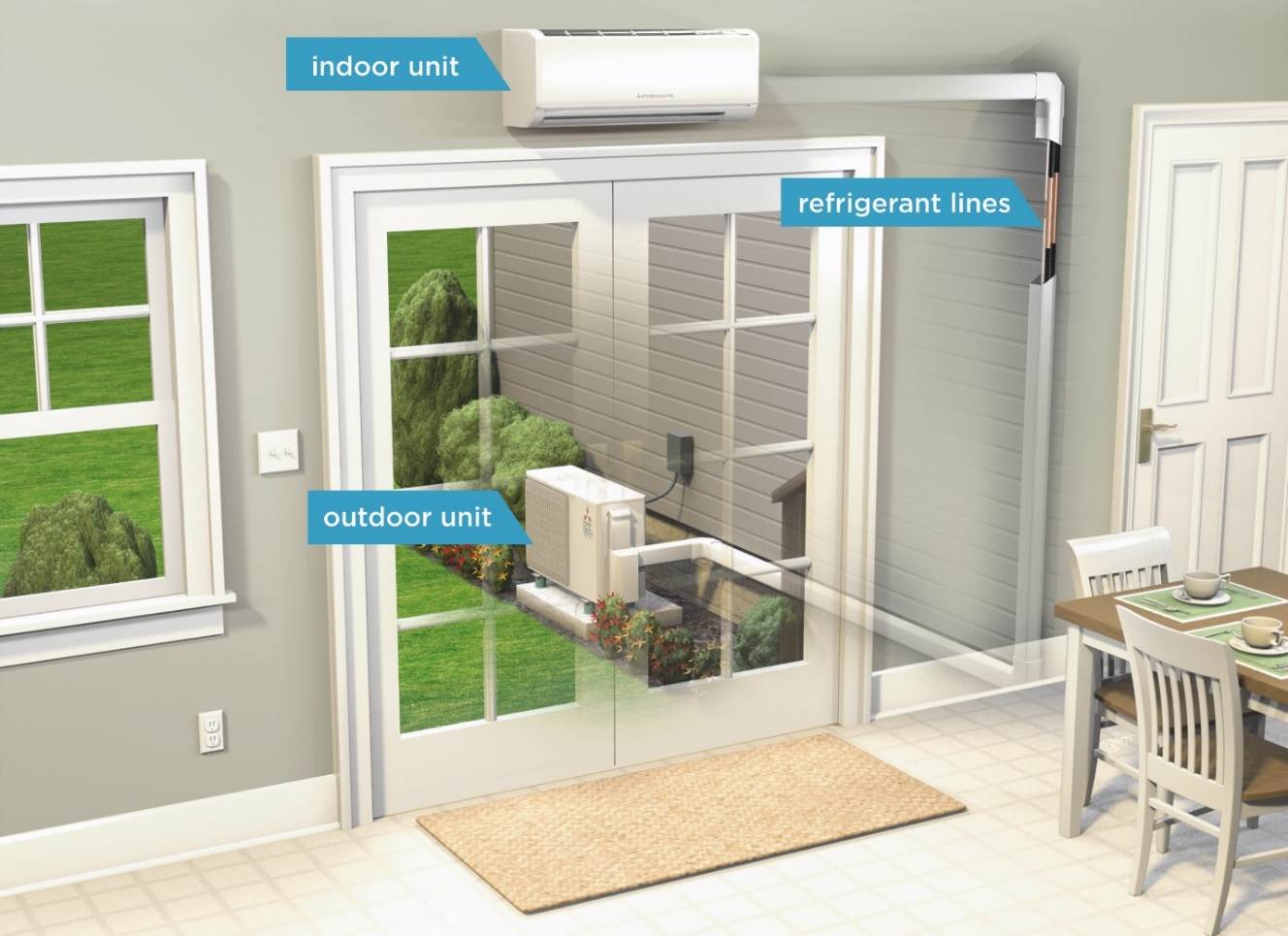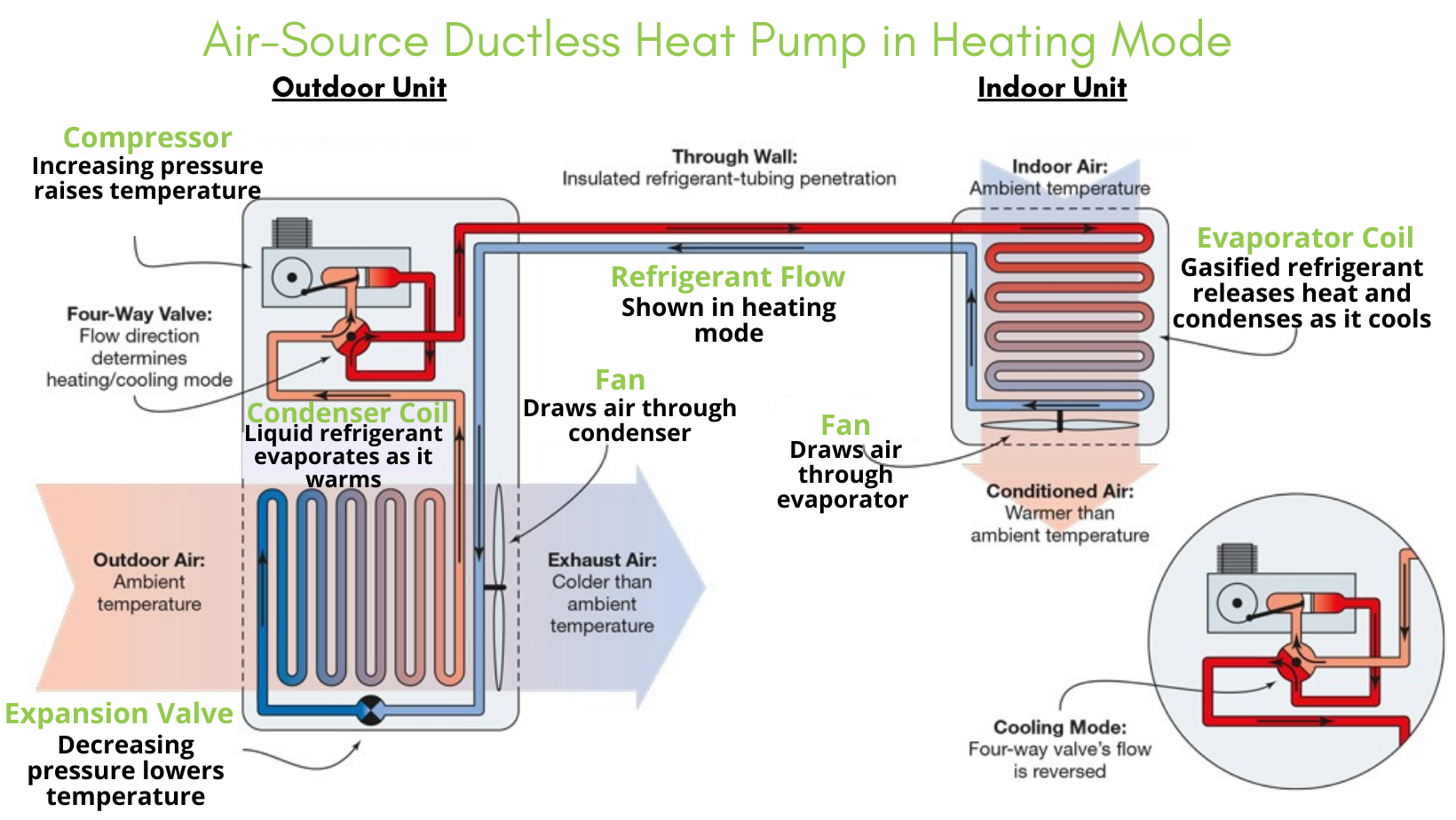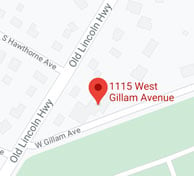A ductless heat pumps is an all-in-one heating and cooling system that doesn't require ductwork to be installed. This makes them great for any type of home or application. But there's a lot to understand before investing in this type of system, and this blog will provide you with everything you need to know.
Click a link to bring you to the corresponding section:
A Short History of Heat Pumps
The beginnings of heat pumps can be dated back to 1748 when Scottish professor, William Cullen, first set out to construct a heat absorption device. The small refrigerating machine utilized a pump to create a vacuum over a chemical called diethyl ether, which caused it to boil and absorb heat from the surrounding air. This became the first scientific principle behind refrigeration -- the main technology behind heating and cooling.
Almost a century later in 1852, a Scottish physicist named Lord Kelvin expanded on this and suggested using the same principle for heating a room. There was also Delaware-based American engineer, Oliver Evans, who, in 1805, designed a closed-cycle refrigerator using compressed ether as coolant.
Around 1856, an Austrian scientist by the name of Peter von Rittinger, developed and built the first heat pump system using the principles developed by Lord Kelvin. Shortly after, ammonia was introduced as a more efficient coolant by Ferdinand Carre.
How Ductless Heat Pumps Operate
Ductless heat pumps are a form of air-source heat pumps in that heat is transferred to and from the air outside to cool and heat your home. Here are the main components and how they work together to do so:
Components
refrigerant
In cooling mode, the refrigerant constantly works to absorb heat from the inside air. In the winter during heating mode, its job is to pump heat into the room.
R-22 was once the most common type of refrigerant used, but in recent years it has been phased out and replaced with R-410A due to government regulations. R-410A also permits higher SEER ratings for HVAC systems, meaning it is more efficient.
evaporator coil
In cooling mode, the evaporator continuously extracts heat from the indoor air and expels it onto the refrigerant to be absorbed. Evaporators are typically arranged in coils of copper tubing and are in the indoor unit of ductless heat pump systems.
Once the heat is pulled in and sufficiently cooled, it is recirculated through the room. In addition to heat extraction, moisture is also removed from the air. This happens when warm air comes in contact with the cold evaporator coils; moisture accumulates on them and this results in dry air.
Once the heat is absorbed, the refrigerant passes through the lines in the wall to the outdoor unit.
compressor
The compressor's job is to increase the gaseous refrigerant's pressure and temperature when it leaves the evaporator coil. The pressure needs to be increased so that the gas heats up and flows to the low-pressure region of the evaporator coil. Just like how water flows from a high point to a low point, gas flows from high to low pressure.
As the pressure increases so does the temperature, which results in the refrigerant temperature being higher than the ambient air facing the outdoor unit. This allows the refrigerant to be able to transfer the heat to the outside air and cool down.
Condenser coil
A condenser works just like an evaporator in reverse. Once the heat is absorbed from the room, the refrigerant is compressed and converted to hot gas. The condenser coils then extract the heat from this compressed refrigerant, and ambient air is blown over the coils from the fan. In cooling mode, the coils release the heat absorbed by the refrigerant to the outside air.
fan
The indoor unit's fan works to draw air through the evaporator. In the outdoor unit, the fan draws air through the condensing coil and helps move the heat energy outside.
expansion valve
After refrigerant passes through the condenser, it must be cooled down to a low-pressure liquid state before moving back to the evaporator. The expansion valve works to rapidly expand the liquid and reduce the temperature and pressure.
Ductless Heat Pump Efficiency
Heat pumps operate on the principle of moving heat rather than creating heat. Unlike other types of home heating systems, heat pumps do not uses oil, gas, or propane to operate, but rather electricity -- an environmentally-friendly and energy-saving alternative.
Moreover, ductless heat pumps allow for zoned heating and cooling, which can be read about more in the next section. The ability to choose when and where you want your system to send tempered air is a great way to lower energy usage and electric bills.
Finally, since standard AC units cannot provide heat they are often paired with furnaces to create a complete system. Conversely, because heat pumps function as a two-in-one system, they can reduce your electricity use for heating by about 50 percent, according to the Energy Department.
One way to measure efficiency is to use HSPF rating, or Heating Seasonal Performance Factor. HSPF is calculated by dividing the heat output (in BTUs) by electricity consumption (in Watt-hours) during the heating season. A rating of eight or higher typically means that it is a highly energy-efficient system. Some of Mitsubishi's ductless heat pumps, for example, offer a HSPF rating of up to 13.5.
Another efficiency measurement is SEER, or Seasonal Energy Efficiency Ratio.
SEER represents the cooling output of an air conditioning system over a 'typical' AC season, divided by the energy used by the system in Watt-hours. It is determined by simulating a typical AC season by using a constant indoor temperature and different outdoor temperatures in a range of 60 to 100 degrees Fahrenheit. Like HSPF, the higher the SEER the better. Mitsubishi-Trane units can have a SEER of up to 33.1.
The majority of Mitsubishi-Trane systems are ENERGY STAR® certified due to the high efficiency ratings, making them eligible for federal and state tax credits plus local utility rebates. With a ductless system, you are not only saving energy, but saving money too. Read more about their energy efficiency here.
Single Versus Multi-Zone Systems
Single-zone
A single-zone ductless system is a perfect solution for homes with problem rooms that just never feel comfortable. It could be a basement, a great room with a high ceiling, a sun room or addition, or a remodeled room over a garage -- if it always feels hotter or colder than the rest of the house, a ductless system can provide the solution.
Ductless heat pumps allow you to pinpoint the area of your home you want to condition or heat. You may even have a traditional central air system that doesn't reach certain rooms or floors well enough. Adding in a ductless air handler is an easy way to solve this problem.
Multi-zone
Multi-zone systems allow tempered air to be sent to multiple areas of your home, or your entire home. Multiple indoor units can be connected to a single outdoor unit, although there are two outdoor heat pumps used in some cases.
Since each air handler has its own thermostat and remote, you have the ability to choose what areas you want to heat or cool whenever it makes the most sense. Not using one room in your house as often? Simply turn off the unit in that room. Want the upstairs to be cooler than the downstairs? Set the upstairs units to a colder temperature.
Multi-zone ductless systems save energy and money by not unnecessarily distributing air to the parts of the home that don't need it.
Surprisingly enough, the air quality in your home can actually be worse than it is outdoors. Luckily, Mitsubishi Electric Cooling & Heating systems use a sophisticated multi-stage filtration system to help remove airborne particles and contaminants such as allergens, viruses, and bacteria from the air as they circulate within a room.
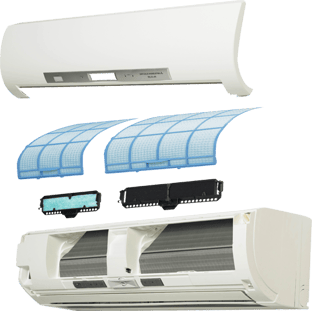
The large hybrid catechin pre-filter absorbs odor-causing gases, while a blue-enzyme, anti-allergen filter helps reduce germs, bacteria, and viruses and helps trap dust, pollens, mites, and other particles that plague allergy sufferers. Some systems also include a Platinum Catalyst deodorizing filter to further reduce unpleasant odors. As a result you enjoy pristine air 2
4/7.
It's important to note that the filters in ductless units must be maintained and clean -- but this is an easy process. With regular cleaning, the hybrid catechin filters can last up to 10 years. This capability not only saves money, but is also good for the environment.
Deciding on Ductless
Types of air handlers
The first step to configuring a new ductless heat pump system is to decide which type of unit works best for each area. There are three main types of ductless air handlers.
READ: New Hope, Pa. home gets multi-zone ductless AC & heating with high-wall, floor-mounted, and ceiling cassette air handlers
Wall-mounted
The most common type of mini-split is the wall-mounted version. These air handlers are placed high up on a wall and are typically the less expensive option. Wall-mounted splits come in "designer" options for a sleeker look, and can also be painted to match the wall. These are a good choice for rooms with higher ceilings.
floor-mounted
Floor-mounted splits are technically also placed on the wall, but positioned near the bottom close to the floor. These are a good option for rooms with lower ceilings, slanted walls, or large windows that take up wall space.
ceiling cassette
Ceiling cassettes are a good option if you don't want to mess with the room's aesthetic or take up any wall space. These are great for larger rooms as air blows out of all four openings to ensure it spreads equally across the area.

Sizing
Once the best types of air handlers for each area are chosen, sizing must be figured out. There are several aspects to consider when choosing the right size unit(s). It's important to have a professional contractor size the units for you, as a unit that's too small will struggle to heat and cool a room efficiently. A unit that's too big will waste energy by producing too much hot or cool air.
When sizing a heat pump system, consider: size of the room, age of the house and insulation, ceiling height, outdoor climate, number of doors and windows, amount of direct sunlight in the room, and type of flooring in the room.
Ductless heat pump cost
Like sizing, many factors go into pricing a new ductless heat pump system. The size and type of the units, the amount of zones you want (single, multiple, entire home), the degree of difficulty of installation, and the type of heat pump (standard versus hyper-heat) will all affect total cost. Most standard installations can typically cost anywhere from $5,000 to $20,000.
Professional installation of the most basic, or single zone, configuration (consisting of one indoor unit and condenser) will cost around $5,000 to $7,000. A multi-zone system consisting of two indoor air handlers typically runs between $9,000 and $11,000. A general rule of thumb in calculating the cost is to add $4,000-$4,500 per indoor unit, again, depending on the model and the degree of difficulty. It's also important to note that one larger unit is often used to cool wide open spaces typically seen in open floor plans where the kitchen, dining room, and family room are all open to each other.
Ductless systems can also qualify for ENERGY STAR® tax credits, plus there's the availability of promotional financing such as 0% interest for 48 months.

Ductless versus ducted
Ductless heat pumps differ from standard heat pumps in that they blow the heated or cooled air directly into the room through line sets that connect the heat pump to the indoor air handlers, rather than through ducts in the home. Unlike systems where the air travels through ducts, ductless heat pumps allow you to choose where you want heating/cooling, when you want it (A.K.A. zoning).
However, you can also opt for hybrid system, combining both ductless and ducted heat pump systems to create the best comfort system for your home.
Choosing the right contractor
When deciding on installing a new ductless heat pump system, it's important to find a qualified contractor. For example, contractors that install Mitsubishi ductless products can be considered Mitsubishi Diamond Elite Contractors, meaning they have received the highest level of accreditation. 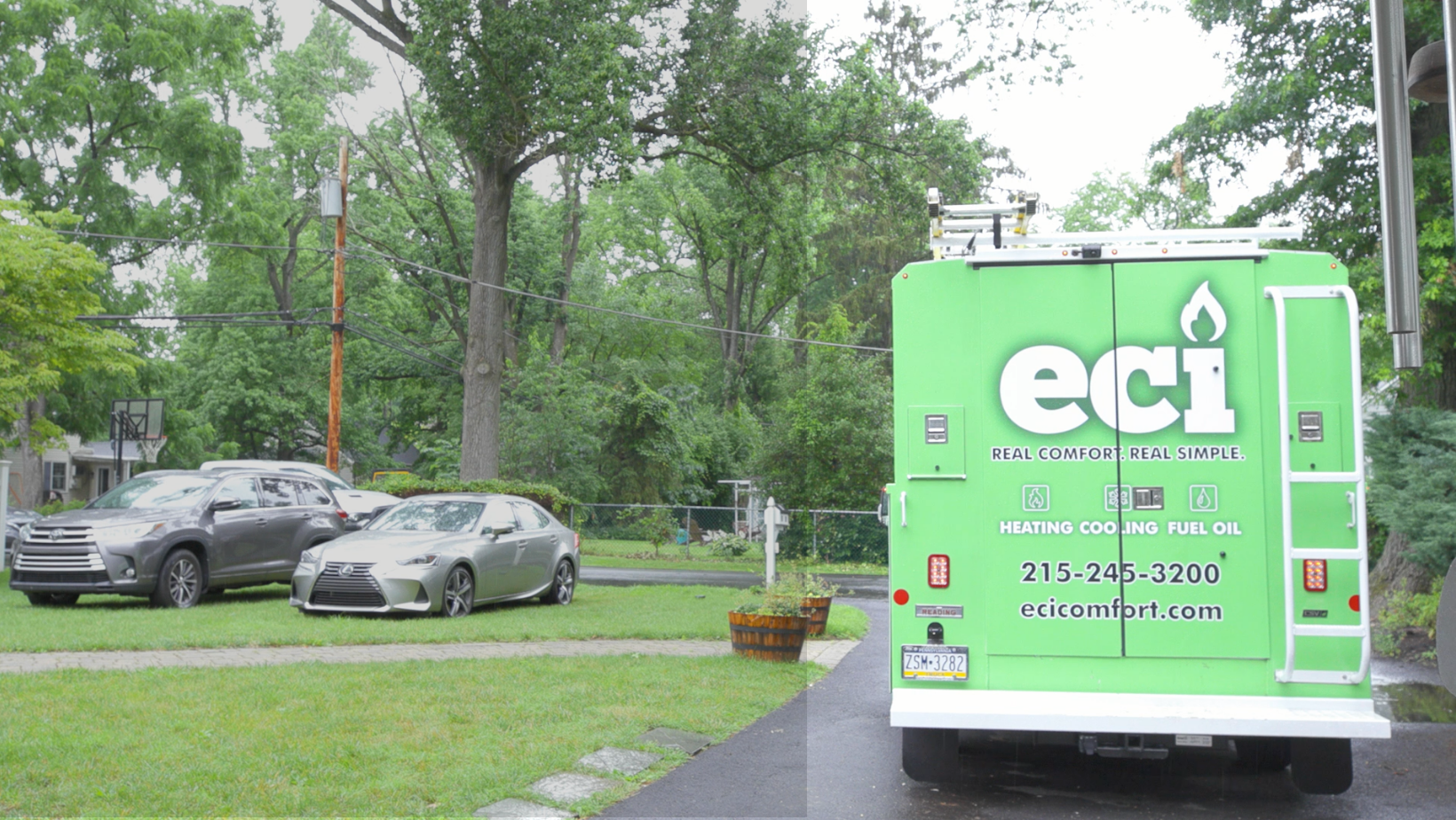

ECI Comfort is a Diamond Elite Contractor -- we have over 30 years of experience installing these systems in all different types of homes, including rowhomes, older homes, stone homes, new construction, etc.
Commercial use
Not only is ductless great for homes, but it also works well for commercial use. Classrooms, small or large offices, meeting rooms, or other buildings can all benefit from the easy installation process, ability for zoning, and better indoor air quality.
Many ductless heat pump systems are also known to be "whisper-quiet", meaning they won't interrupt classes or important meetings.
Moreover, ductless gives you the ability to bill per tenant for HVAC electricity consumption rather than resorting to approximate usage. You can also tally electrical usage per system or per unit, depending on how your building and systems are configured.
Finally, a ductless heat pump is perfect for historic buildings that can present significant challenges when adding or updating an HVAC system. With minimized visual and audible disruption, ductless can keep the aesthetics and charm of your older, venerable building intact.
Pros and Cons
Pros
The biggest advantage of a ductless heat pump is in the name -- it does not require ductwork and therefore has an easier, minimally invasiveness installation process. This is perfect for rowhomes or homes in the city that don't have a lot of extra space. It's also a great fit for older or historic homes with architecture and style that needs to be preserved. And we can't forget the other main advantage: heat pumps provide both heating and cooling, making them suitable to be your one-and-only HVAC system.
With a ductless system, you can experience customized comfort as well as higher efficiency and money savings by implementing zones. Wherever there is an indoor air handler, you can control the temperature at any given time, allowing for greater comfort and reduced energy usage.
Heat pumps can also employ advanced technology, like hot-start technology from Mitsubishi that provides warm air from the start, reducing drafts. Ductless heat pumps can also greatly improve indoor air quality with advanced filtration systems to keep you and your family happy and healthy.
Finally, ductless heat pumps can qualify for rebates and other financing options.
Cons
The indoor units of ductless heat pumps may not be the most ideal look for some homeowners. They may also not be a viable option for larger homes, as you would need many air handlers and even two outdoor units to sufficiently heat and cool the entire home, which would be costly. Finally, standard heat pumps cannot sufficiently heat a home once temperatures drop too low. For heating in the colder temperatures, you'd need to opt for a Hyper-Heat heat pump which is more expensive.
Are Ductless Heat Pumps Right for You?
The right home heating and cooling is critical to your daily comfort, so choosing one can be a difficult decision. Think about these advantages and disadvantages, your budget, and what specific issues you are looking to solve. Then, contact a reliable contractor to come out to your home and see exactly what's best for you.
If you live in the Delaware Valley/Greater Philadelphia area and would like to find comfort within your home, visit our website or give us a call at 215 - 245 - 3200 to learn more.

